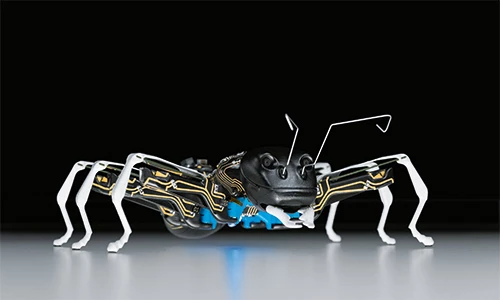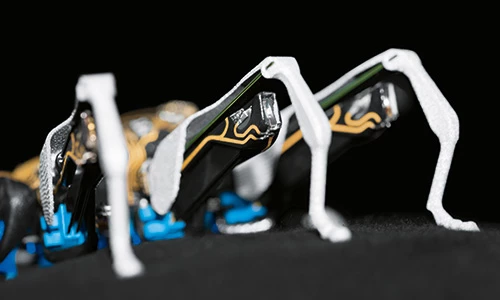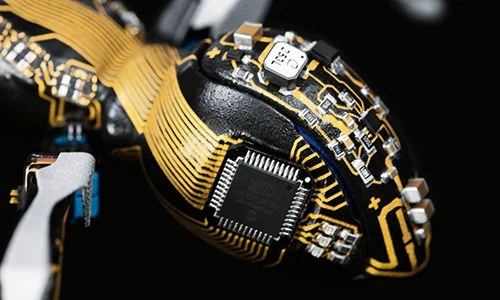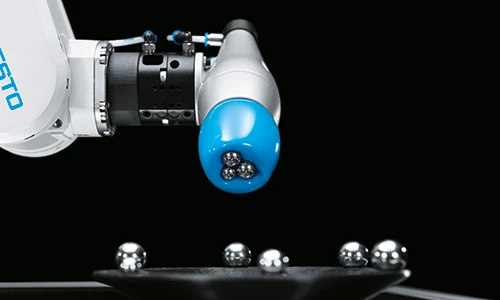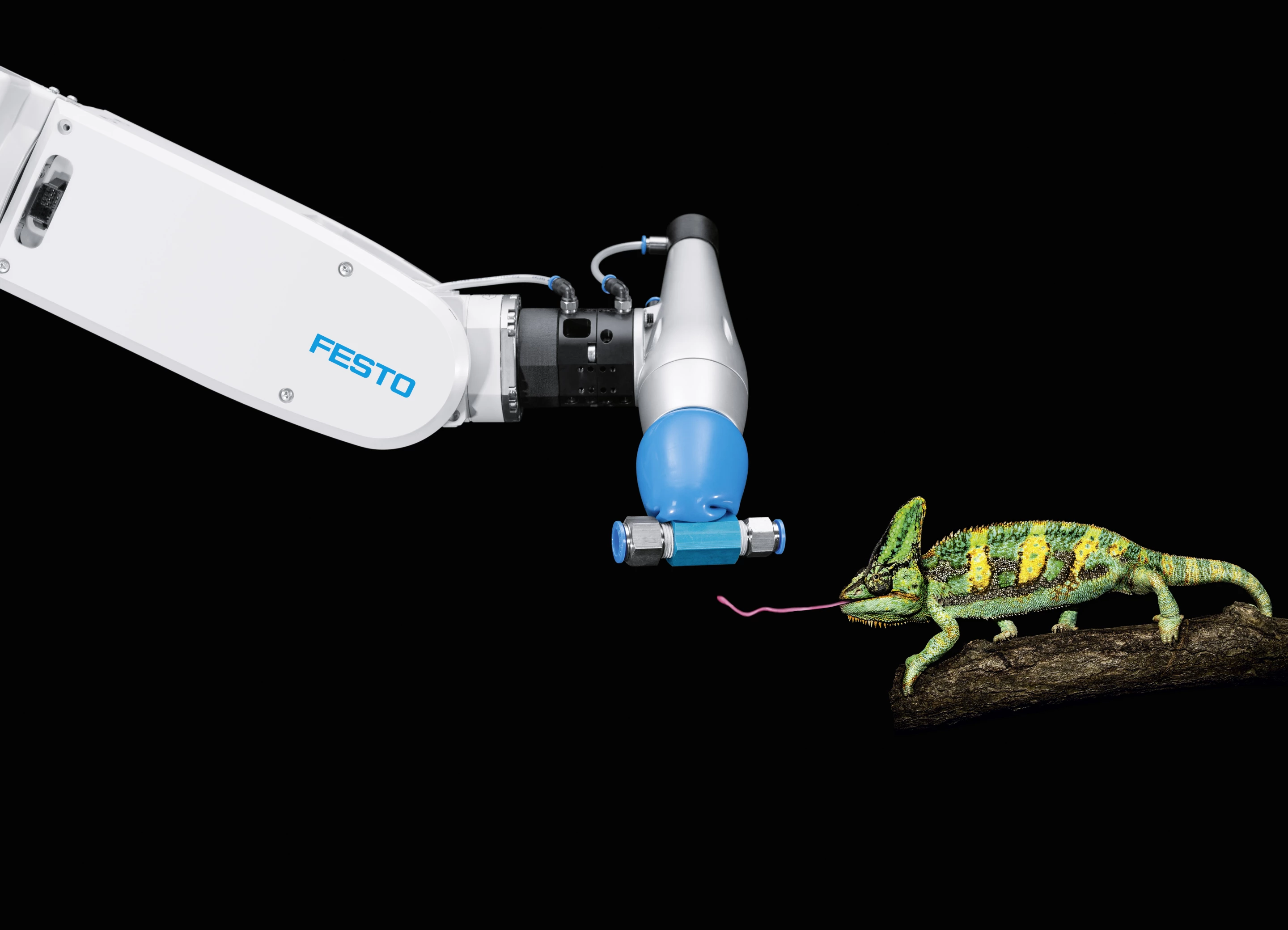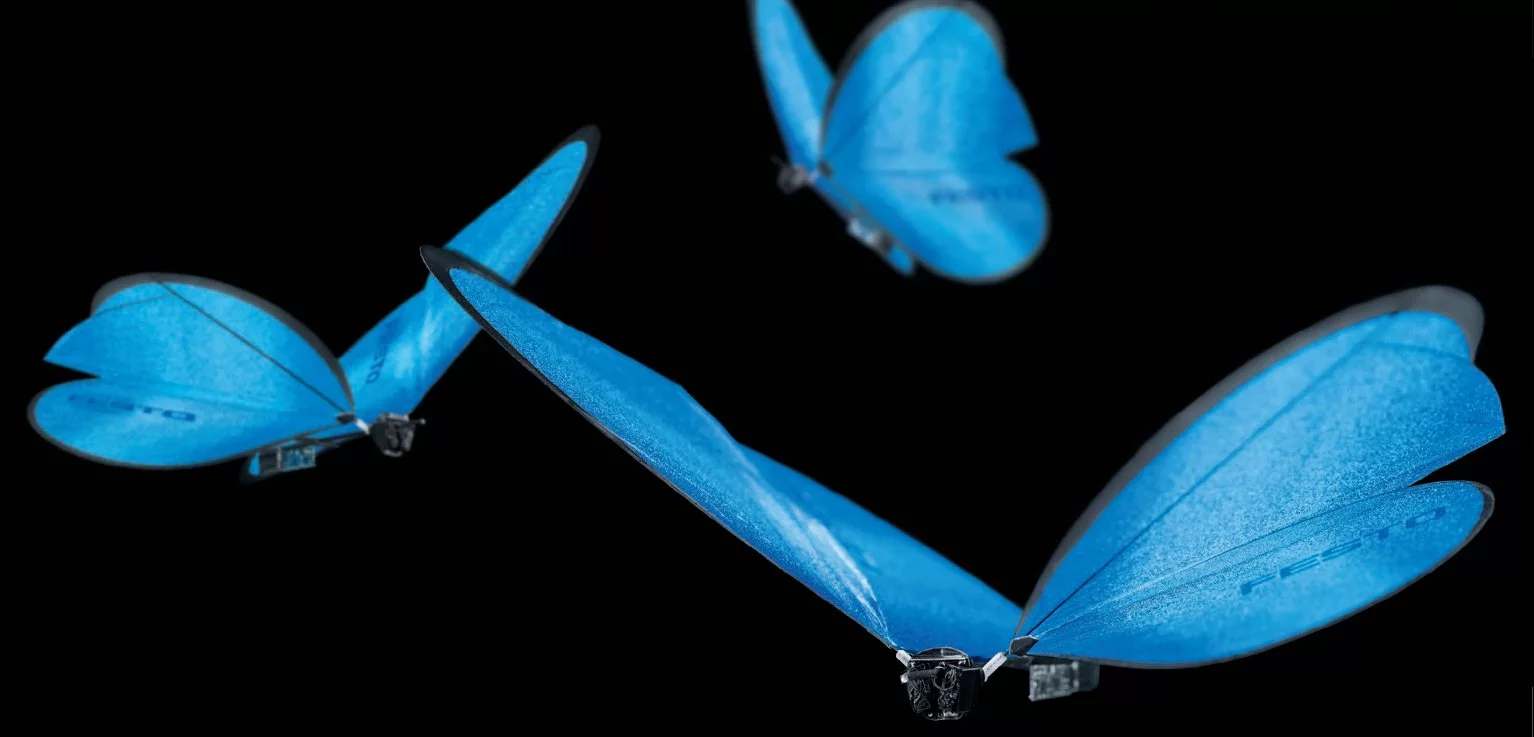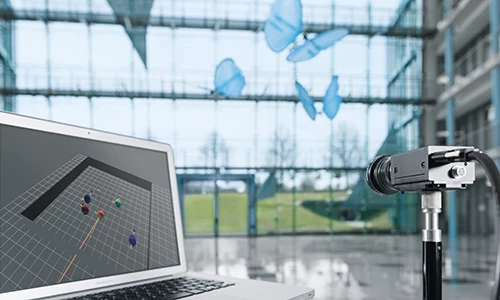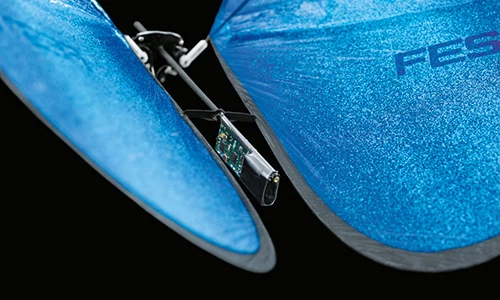Designing a robot that can convincingly move like a member of the animal kingdom is a much more difficult prospect than merely building something that has the outward appearance of one. Some of the best examples of both have come from the engineers at Festo, including a herring gull named SmartBird and a bit of a bounder known as the BionicKangaroo. As a taste of things to come at next month's Hannover Messe trade show in Germany, the company has now revealed three more biomimetic creations: a small colony of ants, a gripper modeled on a chameleon's tongue and some fine flyers in the shape of some big blue butterflies.
Festo sees the development of its BionicANTs, where the latter half of the name stands for Autonomous Networking Technologies, as an indication of things to come on the factory floor, where production systems of the future are founded on adaptable and intelligent components which are able to work under a higher overall control hierarchy. These artificial insects don't just look and move like giant versions of their counterparts in nature, but the company's engineers have also managed to mimic the cooperative behavior of real world ants with the help of complex control algorithms.
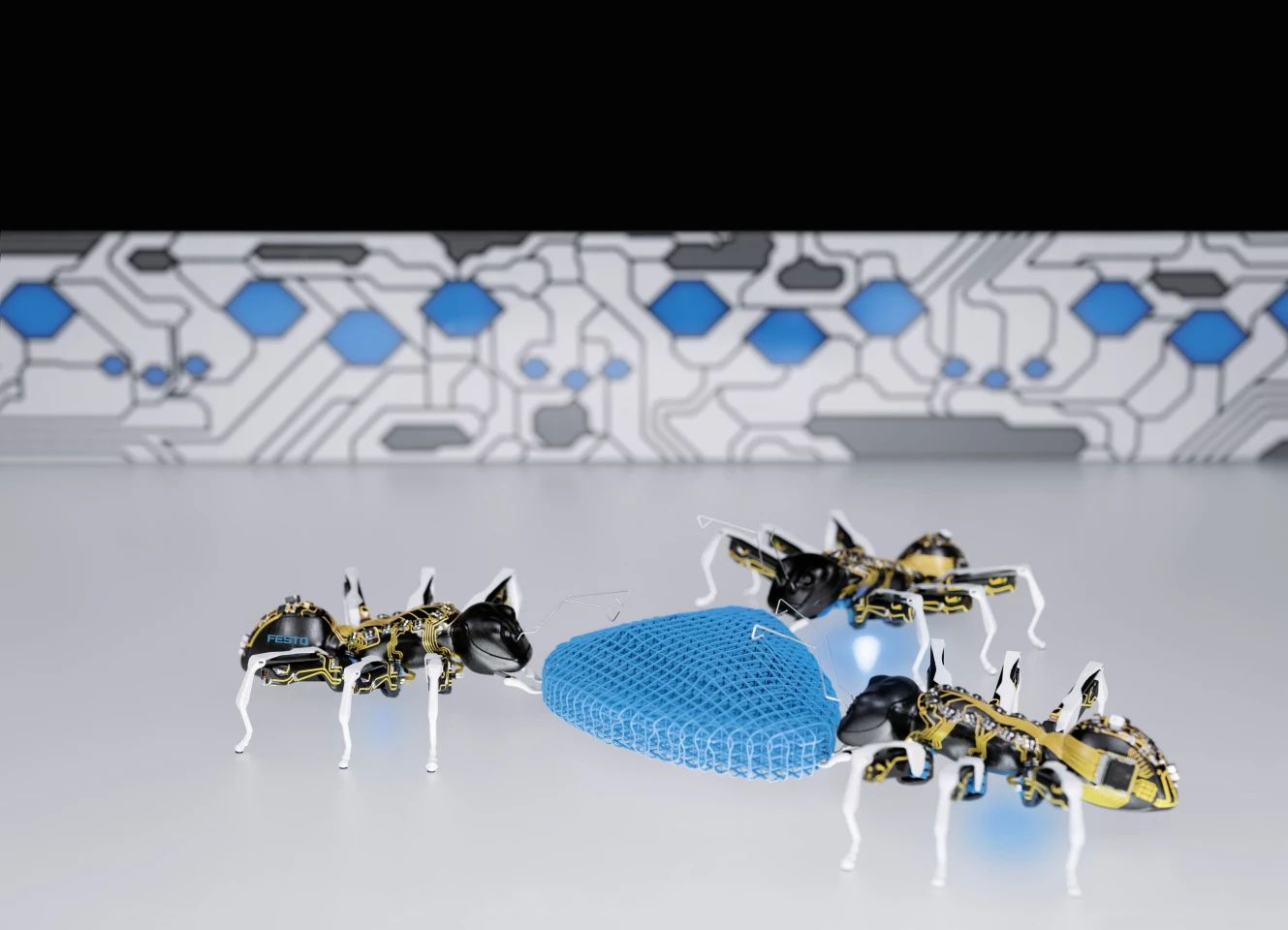
"Like their natural role models, the BionicANTs work together under clear rules", explained the company's Head of Corporate Communication and Future Concepts, Dr.-Ing. Heinrich Frontzek. "They communicate with each other and coordinate both their actions and movements. Each ant makes its decisions autonomously, but in doing so is always subordinate to the common objective and thereby plays its part towards solving the task at hand."
The use of Molded Interconnect Device technology sees visible, three-dimensional circuit structures integrated into laser-sintered shaped components during the build process, which is reported to allow for more design freedom as well as making assembly easier. Piezo-ceramic bending transducers are used in the actuators of the legs and gripper jaws, there are two cameras in the head and position is tracked using an optical mouse sensor mounted under the thorax.
Each BionicANT measures 13.5 cm (5.3 in) and runs on two 7.2 V batteries charged when the antennae touch metal bars running along the sides of an enclosure.
You can see the colony in action in the video below.
If an insect happens to land within range of a chameleon's lightning fast tongue, the chances of escape are pretty slim. Festo, in collaboration with the University of Oslo, has based its FlexShapeGripper on similar principles to the lizard's sticky tongue.
Attached to the end of a robotic arm, the water-filled elastic silicone cap is able to wrap itself around target objects and pick up, gather and set back down several objects of different shapes in one action. Festo sees future applications in service robots, in assembly plants or any facility needing one flexible solution for handling different-shaped objects at the same time.
You can see the FlexShapeGripper in the video below.
Festo's interest in flying objects continues in what's arguably the most visually impressive demonstration of the bunch. The eMotionButterflies bring together expertise gained from the company's BionicOpter and eMotionSpheres projects. They exhibit collective behavior and are able to autonomously avoid crashing into each other in real-time thanks to a networked external guidance and monitoring system.
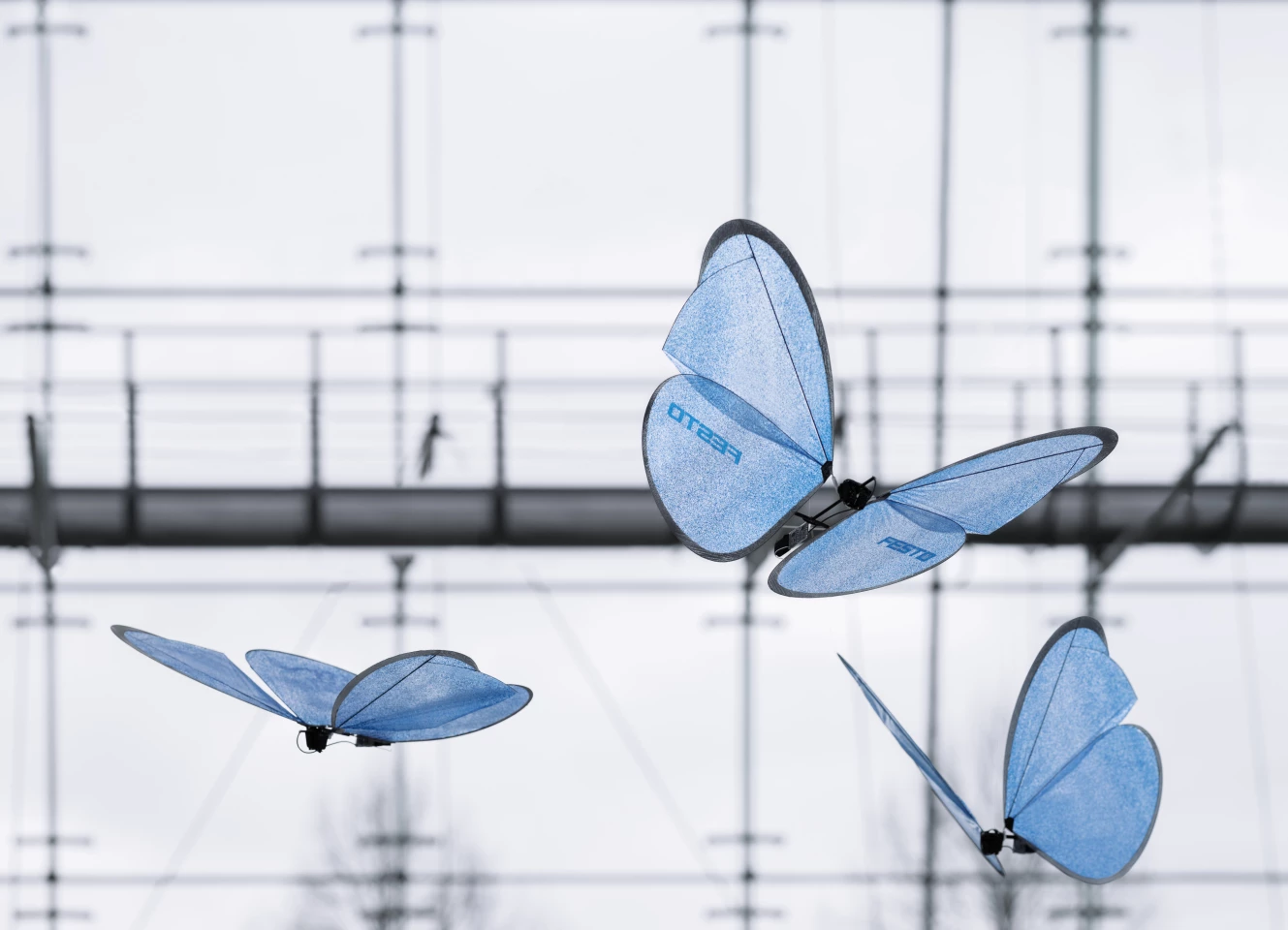
An indoor GPS system with ten strategically-positioned infrared cameras is installed in the space where the butterfly bots are to fly. Each flapping robot has two IR markers on its torso and is tracked by the system. Positional data is then sent to a master computer for processing.
Festo says that these fancy flutterers were designed to demonstrate functional integration, ultra-lightweight construction and communication between individual systems. Each bot features split wing elastic capacitor film mounted to super thin carbon rods, combining the largest possible wingspan (50 cm/20 in) with the smallest possible weight (32 g/1 oz).
Freely and individually selected beat amplitude, beat speed and the respective turning points are reported to allow for a very close approximation of the robotic butterfly's biological role model in flight. An eMotionButterfly has a wing beat frequency of between 1 - 2 Hz and can fly at up to 2.5 meters per second (about 8 feet per second). It can stay in the air for roughly 4 minutes before needing a recharge (which takes 15 minutes).
A laser-sintered torso houses an ATxmega32E5 microcontroller and an ATmega328 microcontroller, two servo motors to actuate the wings, an inertial sensor, gyro/accelerometer/compass, two radio modules and two 7.4 V LiPol battery cells.
The video below shows the eMotionButterflies in flight.
Festo will de showing these and other technologies at the 2015 Hannover Messe, which begins April 13.
Source: Festo


